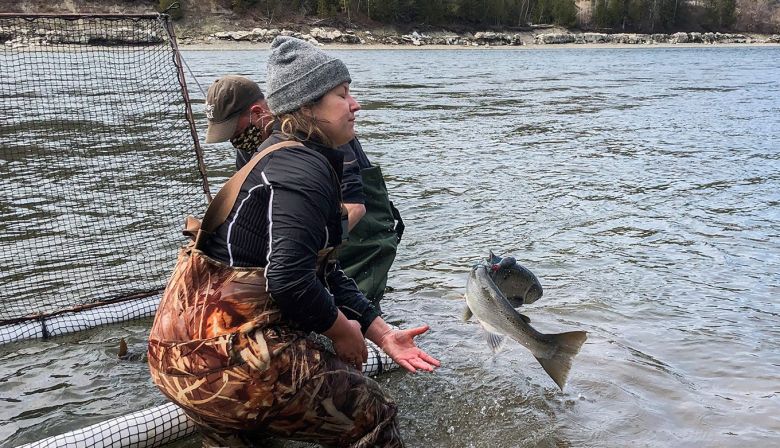
Subscribe & stay up-to-date with ASF

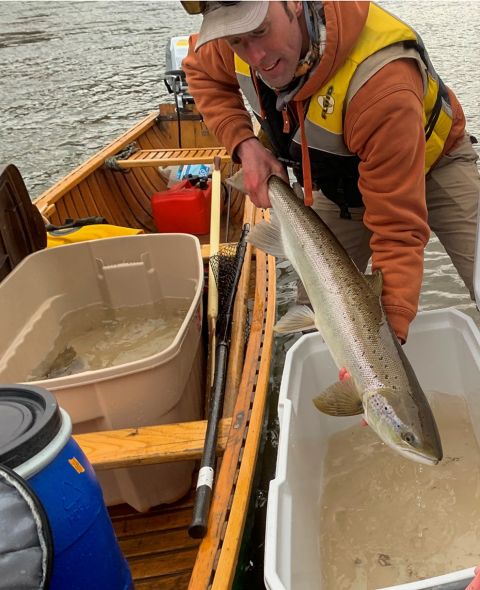
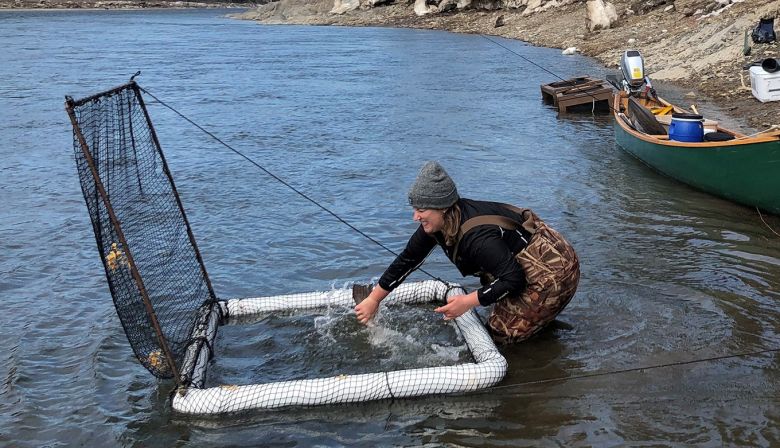

In 2021 we are still afflicted with Covid-19, but the full shock has worn off and there is better preparation for putting in place Atlantic salmon seasons and the regulations surrounding the activities. International borders are still closed, and provincial borders are going to get tougher to cross, it would seem. But for residents within each province of Atlantic Canada and Quebec, there will be Atlantic salmon angling.
Each province has its own set of regulations, of course, and everyone but Newfoundland and Labrador has them in place. It is a somewhat strange dance in the case of Newfoundland, Nova Scotia, PEI and New Brunswick with the federal Department of Fisheries and Oceans providing the management decisions, but under those rules there are the provincial rules on implementing the season. In Quebec the provincial government is the sole regulator.
Here are the places to find the information for the 2021 season:
New Brunswick
The 2021 Anglers’ Guide is online as a pdf:
https://www2.gnb.ca/content/dam/gnb/Departments/nr-rn/pdf/en/Fish/Fish.pdf
If you want to check out license costs, go here:
https://www2.gnb.ca/content/gnb/en/services/services_renderer.1115.Fishing_Licence.html#serviceFees
There is presently the black salmon or kelt season underway. These are fish that have overwintered in the rivers. While many question the wisdom of having a kelt season, this year there appear to be more kelts than in recent years, and they appear to be in better physical condition.
Note that NB has licenses for non-residents, and should the ATLANTIC BUBBLE be restored, salmon anglers from NS, PEI and NL would be able to visit their special stretches of water in the Miramichi, Restigouche or other watershed.
DFO Gulf Region always fine-tunes their rules and regulations, and 2021 is no exception. Check out the following, affecting NB, NS and PEI:
http://www.glf.dfo-mpo.gc.ca/Gulf/FAM/Recreational-Fisheries/Atlantic-Salmon-April-15-2021
Nova Scotia
Start with the 2021 Nova Scotia Anglers’ Guide
https://beta.novascotia.ca/sites/default/files/documents/1-2412/anglers-handbook-en.pdf
There are provincial travel barriers in place for those wishing to visit Nova Scotia from New Brunswick, but at the moment anglers from Newfoundland and Labrador appear able to enjoy rivers in Nova Scotia when the salmon season opens.
Prince Edward Island
The Angler Summary for PEI is available:
https://www.princeedwardisland.ca/sites/default/files/publications/fw.2021-22_angling_summary.pdf
The Striped Bass in the southern Gulf of St. Lawrence
Not to be forgotten are these arch-predators of Atlantic salmon smolts.
This year DFO has created a FAQ page that covers many of the questions about striped bass, the angling season, etc. It is a very useful guide for the 2021 season, for NB, NS and PEI:
http://www.glf.dfo-mpo.gc.ca/Gulf/FAM/Recreational-Fisheries/2019-FAQ-Striped-Bass
Quebec
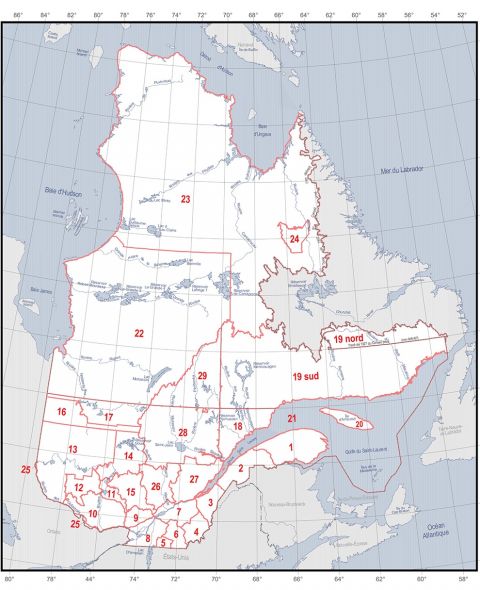
There is a good starter page, although it does require some search in order to find the Atlantic salmon component:
https://www.quebec.ca/en/tourism-and-recreation/sporting-and-outdoor-activities/sport-fishing/news
There is a PDF map of the numerous scheduled Atlantic salmon rivers in Quebec:
https://cdn-contenu.quebec.ca/cdn-contenu/peche/versions-imprimables/Peche-Saumon.pdf?1590695139
Newfoundland and Labrador
It is likely, but not announced, that the season will begin June 1. DFO and the provincial government are always late with their proclamation on season and harvest numbers. Some will add this is an aggravation that could be corrected, as essentially every other government entity in the entire North Atlantic part of the world publishes their details before Newfoundland.
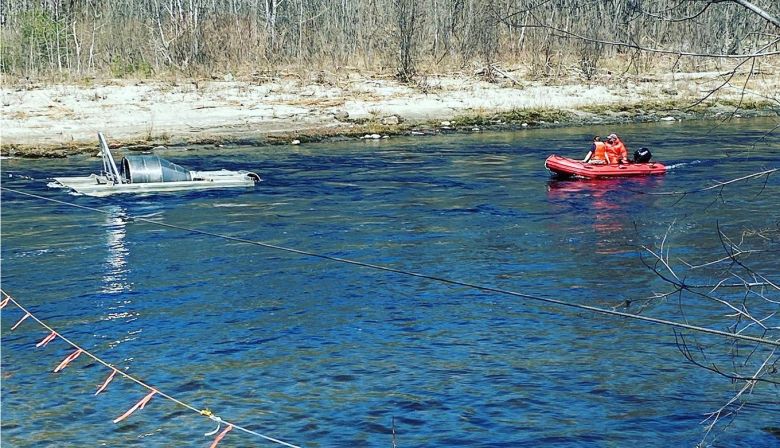
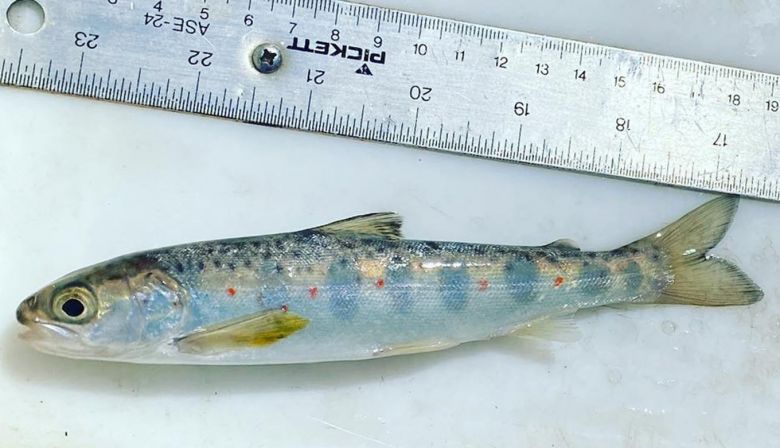
The early start to spring has ignited fish migrations upstream and downstream across Maine. Last week, the Maine DMR reported smolts out-migrating in the Sandy, Narraguagus, and East Machias Rivers and river herring moving upstream in the Penobscot River.
Water levels are concerning though. With a low snowpack and light precipitation accumulations, over half of Maine is already labeled as ‘abnormally dry’ by the US Drought Monitor, and most rivers are well below normal stages according to USGS. Rain is sweeping through so time will tell.
Looking ahead, lots of work is planned under the Maine Headwaters Project to improve fish passage, upstream and down.
In the Kennebec watershed, the impoundment of Walton’s Mill Dam will begin a slow drawdown to prepare for dam removal and throughout the summer ASF and partners will be monitoring riparian vegetation succession and aquatic response in Temple Stream.
With the USFWS, we are planning several field surveys at priority road crossing sites throughout the Sandy River drainage. Field surveys are the first step in assessing existing conditions and to begin restoration planning.
In Farmington, construction is scheduled to replace an undersized culvert along Cummings Brook as part of the larger Temple Stream watershed restoration effort.
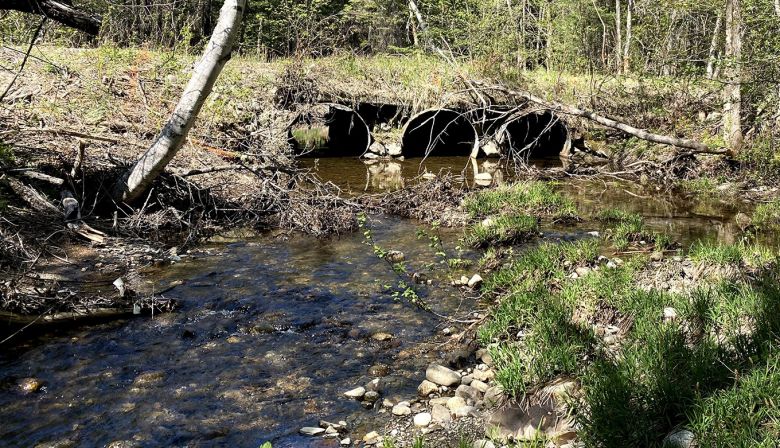
The smoltwheel at Route 9 (The Airline) counted 11 smolts to Apr. 19, while a second smotwheel had a single smolt on Apr. 18.
Salmon rivers in Quebec are ice free in most areas with substantial flows. The Moisie, as of today is at 1,200 cubic meters per second. In 2020, around the same dates, the flow was approximately 150 cubic meters per second. Other rivers like the Matapedia and Cascapedia are at higher flow levels for this time of year.
Angling starts officially in Quebec on May 15 on the Causapscal River. The first anglers usually arrive on May 22nd on this traditionally “early” river.
Multi-use Issues and Lack of Agreement on Designated Atlantic Salmon Rivers
There are a few issues that are front and centre at the present time on salmon rivers in Quebec which are designated as such and have a special status. These issues, once resolved, will have impacts on all salmon rivers in Quebec.
One issue is the situation on the Bonaventure river where the lack of share-user agreement between stakeholders in the watershed led to a situation that was obviously out of control during summer 2020, involving canoes, kayaks and salmon. The situation illustrated a dire need for an agreement between all the different users of the watershed.
The sheer numbers of canoeists, especially from a commercial operation called “CIME Aventures” which provides guided experiences on the river, plus snorkeling and swimming in salmon pools, was overwhelming. During the 2020 season (90 days), 35,000 canoeists had used the services of CIME and while Zec sold 7,101 rod days to salmon anglers over 120 days.
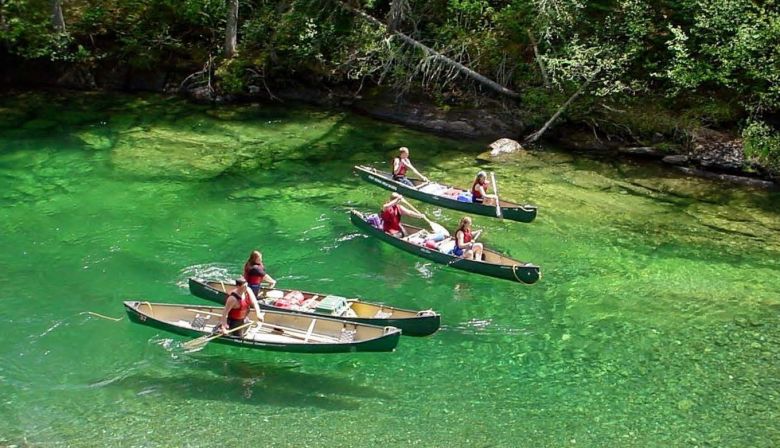
Acting on pressure from its members, the Association des pêcheurs sportifs de la rivière Bonaventure (APSB) formed a committee that included all stakeholders on this “gin clear” world renowned watercourse.
Following much deliberation over the fall and winter, a draft cohabitation agreement was submitted to the Ministère des forêts, faune et des parcs (MFFP) for approval. All participants had approved the final draft version of the cohabitation plan except for CIME.

A long-standing issue of vehicle traffic during low water periods on the Pabos rivers came to a head last season and is only now being taken seriously by the MFFP. Obvious damage to salmon habitat occurred when SUV’s and ATV’s raced up and down the river bed, while also displacing and harassing wild salmon.

La Moisie, à ce jour, enregistre 1 200 mètres cubes par seconde. En 2020, aux mêmes dates, le débit était d’environ 150 mètres cubes par seconde. D’autres rivières comme la Matapédia et la Cascapédia sont à des niveaux de débit plus élevés pour cette période de l’année.
La pêche sportive débute officiellement au Québec le 15 mai sur la rivière Causapscal. Les premiers pêcheurs entameront la saison dès le 22 mai sur cette rivière traditionnellement « hâtive ».
Il y a quelques dossiers chauds qui sont à l’avant-plan à l’heure actuelle sur certaines rivières à saumon au Québec, des rivières qui détiennent un statut particulier par rapport à d’autres cours d’eau. Ces problèmes et défis, une fois résolus, auront des répercussions sur toutes les rivières à saumon du Québec.
L’une d’elles est la situation de la rivière Bonaventure où le manque d’entente de cohabitation entre les parties prenantes du bassin versant a conduit à une situation manifestement hors de contrôle au cours de l’été 2020. La situation illustrait un besoin urgent d’un accord entre tous les différends utilisateurs du bassin versant.
Une entreprise commerciale de canotage appelée « CIME Aventures », qui vend des expériences guidées sur la rivière, mais aussi de la plongée en apnée et la baignade dans des fosses a saumon, a connu un achalandage beaucoup plus élevé et écrasant l’été dernier.
Au cours de la saison 2020 (90 jours), 35 000 canoteurs ont utilisé les services de CIME, tandis que la Zec a vendu 7 101 jours-pêche pendant 120 jours aux saumoniers.
Afin d’adresser les défis vécus en 2020 et à la suite de la pression exercée par certains membres, l’Association des pêcheurs sportifs de la rivière Bonaventure (APSB) a formé un comité regroupant toutes les parties prenantes de ce cours d’eau saumon de renommée mondiale.
Après de nombreuses délibérations au cours de l’automne et de l’hiver, un projet d’entente de cohabitation a été soumis au ministère des Forêts, de la Faune et des Parcs (MFFP) pour approbation. Tous les participants avaient approuvé la version finale du projet de plan de cohabitation, à l’exception de CIME.
La semaine dernière, une réunion citoyenne a été organisée par la ville de Bonaventure pour informer les résidents de ce qui est proposé par le comité multipartite. L’assemblée annuelle de l’APSB aura lieu le 27 avril et une motion sera débattue qui rendra obligatoire l’inscription des canoteurs (indépendants et commerciaux) auprès de la Zec.
La circulation de véhicules pendant les périodes d’étiage dans les rivières Pabos, un problème de longue date a atteint des sommets ahurissant la saison dernière et est maintenant pris au sérieux par le MFFP. Des dommages évidents à l’habitat du saumon se sont produits lorsque des VUS et des VTT ont parcouru le lit de la rivière, tout en déplaçant et en harcelant le saumon sauvage.

The Environmental Sciences Research Fund (ESRF) program is an Indigenous collaboration with DFO and NGOs throughout Atlantic Canada. The program aims to tag and track Atlantic salmon kelts and smolts on a broad scale throughout eastern Canada and into the North Atlantic Ocean to help answer larger scientific questions about their migrations.
On the Restigouche this week, ASF and provincial NB DNR staff as well as volunteers assisted lead organization Gespe’gewaq Mi’gmaq Resource Council (GMRC) with catching and tagging kelts.
GMRC staff successfully tagged 11 salmon with both satellite “pop-off” and acoustic tags and 25 salmon with acoustic tags. Overall, it was a very successful couple of days on the beautiful Restigouche River, with tagging targets met, and some quality time in the field with partners.
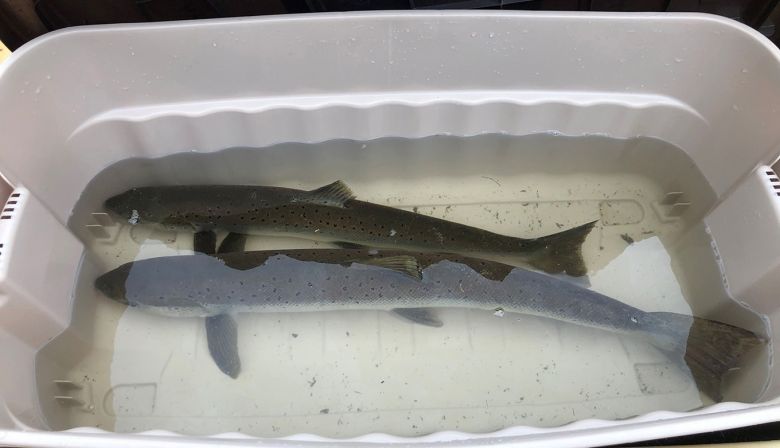
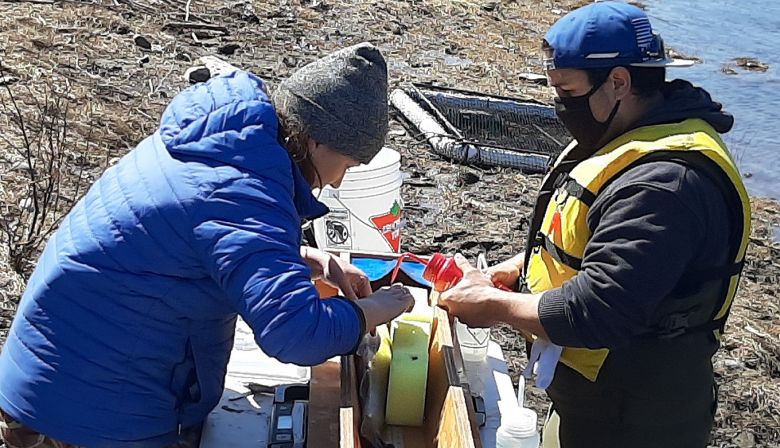
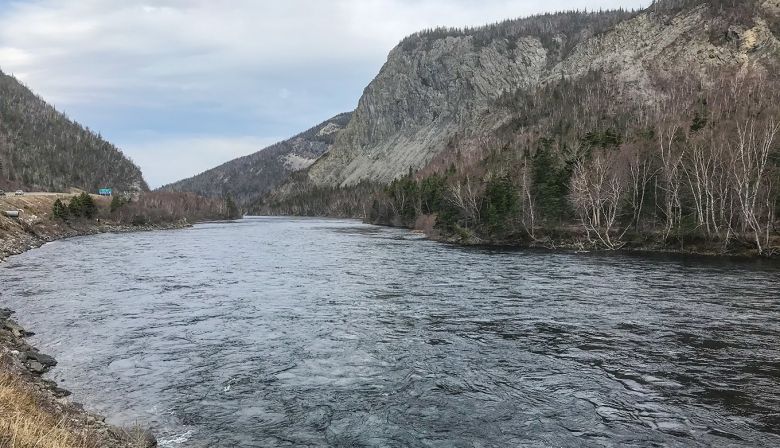
It is still about five weeks until Atlantic salmon angling season in Newfoundland. But rivers have been flowing well, and at sea the ice levels have been lower this year. Just as in other areas, it may well be likely that smolts are leaving fresh water earlier this year. Hopefully conditions are good for their great migration.
To explore ways of gift planning and to join ASF’s Royal Wulff Society,
please click here